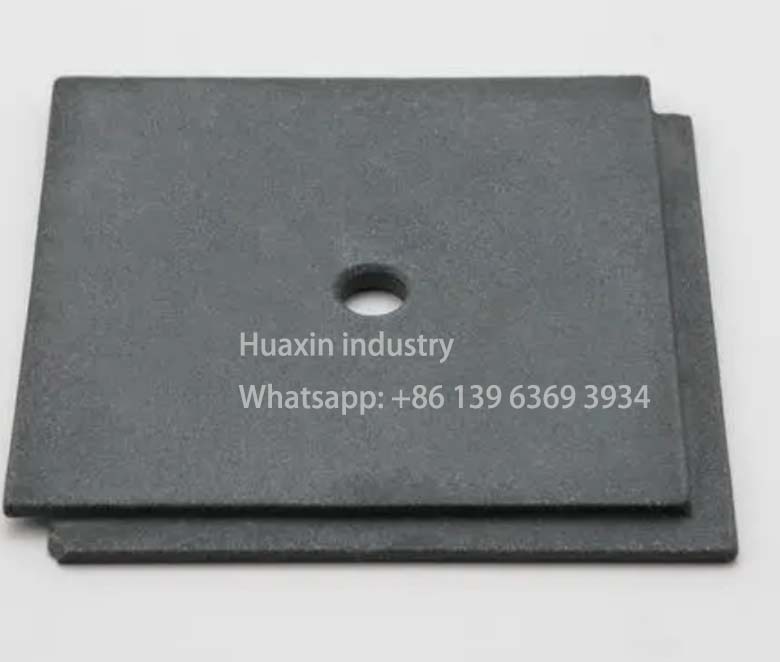Silicon carbide ceramic plates, also known as SiC plates, are a type of advanced ceramic material that is widely used in various industries. They are made from a combination of silicon and carbon, which are heated and reacted together to form silicon carbide, a compound known for its exceptional hardness and high thermal conductivity.

Silicon carbide plates have several key characteristics that make them highly desirable for many applications. Firstly, they exhibit excellent mechanical strength and can withstand extreme temperatures and harsh environments. This makes them suitable for use in industries such as aerospace, defense, and automotive, where materials need to withstand high stress and extreme conditions.
Another important characteristic of silicon carbide plates is their exceptional hardness. SiC plates are one of the hardest materials available, ranking just below diamond on the Mohs scale of hardness. This hardness makes them resistant to wear, abrasion, and corrosion, making them ideal for use in applications such as cutting tools, grinding wheels, and wear-resistant parts.
In addition to their hardness, silicon carbide plates also possess high thermal conductivity. This means they can efficiently transfer heat, making them useful in applications that require effective heat dissipation, such as heat exchangers and thermal management systems. Their high thermal conductivity also allows for rapid and uniform heating and cooling, making them suitable for use in high-temperature furnaces and kilns.
Furthermore, silicon carbide plates have excellent electrical conductivity, making them suitable for use in electronic components and devices. They are often used as substrates for power electronics, as their high thermal conductivity helps dissipate heat generated by these components.
The uses of silicon carbide ceramic plates are vast and diverse. They can be found in various industries and applications, including:
1. Aerospace and defense: Silicon carbide plates are used in aircraft and military vehicles due to their high strength, hardness, and thermal conductivity. They can be found in components such as engine parts, armor, and heat shields.
2. Automotive: SiC plates are used in automotive applications to improve fuel efficiency and reduce emissions. They can be found in components such as brake pads, clutches, and engine parts.
3. Industrial applications: Silicon carbide plates are widely used in industrial applications such as cutting tools, grinding wheels, and wear-resistant parts. Their exceptional hardness and wear resistance make them suitable for machining and manufacturing processes.
4. Energy and power generation: SiC plates are used in energy and power generation applications, such as solar panels, wind turbines, and power electronics. Their high thermal conductivity and electrical conductivity make them ideal for these applications.
In conclusion, silicon carbide ceramic plates are a type of advanced ceramic material with exceptional hardness, high thermal conductivity, and excellent mechanical properties. They find applications in various industries due to their versatility and performance characteristics. From aerospace and defense to automotive and industrial applications, silicon carbide plates play a crucial role in enhancing performance and efficiency in numerous fields.












